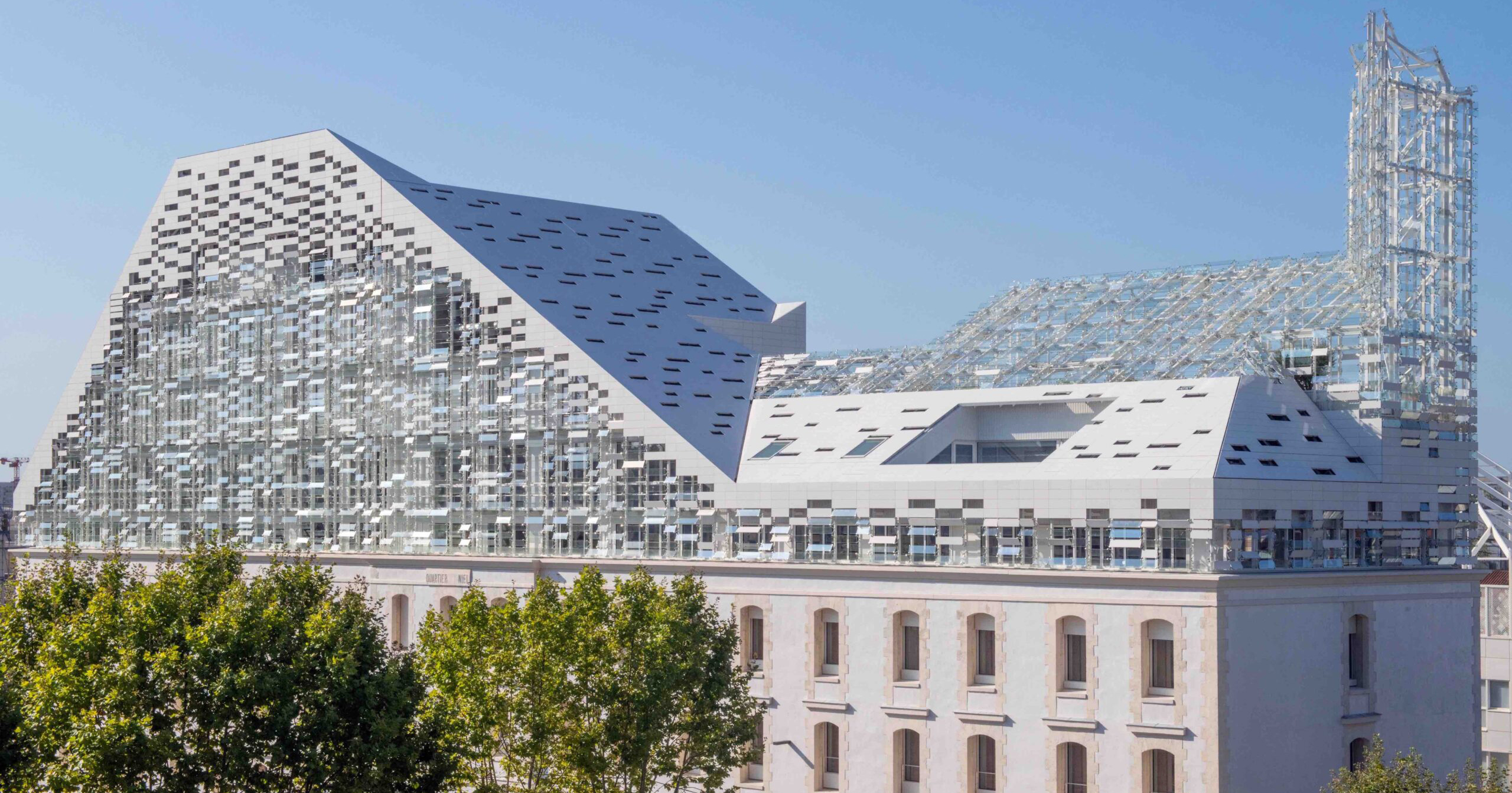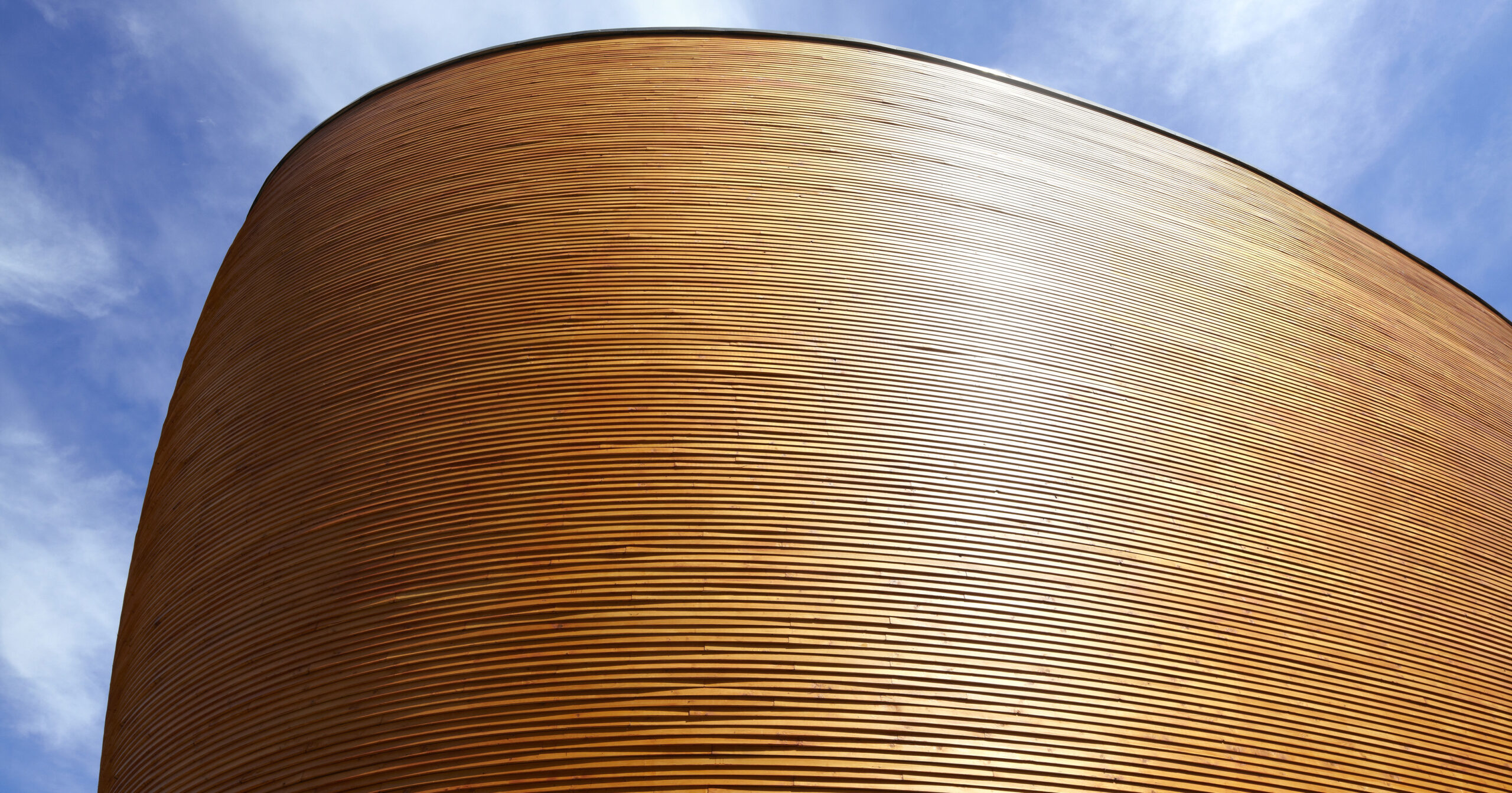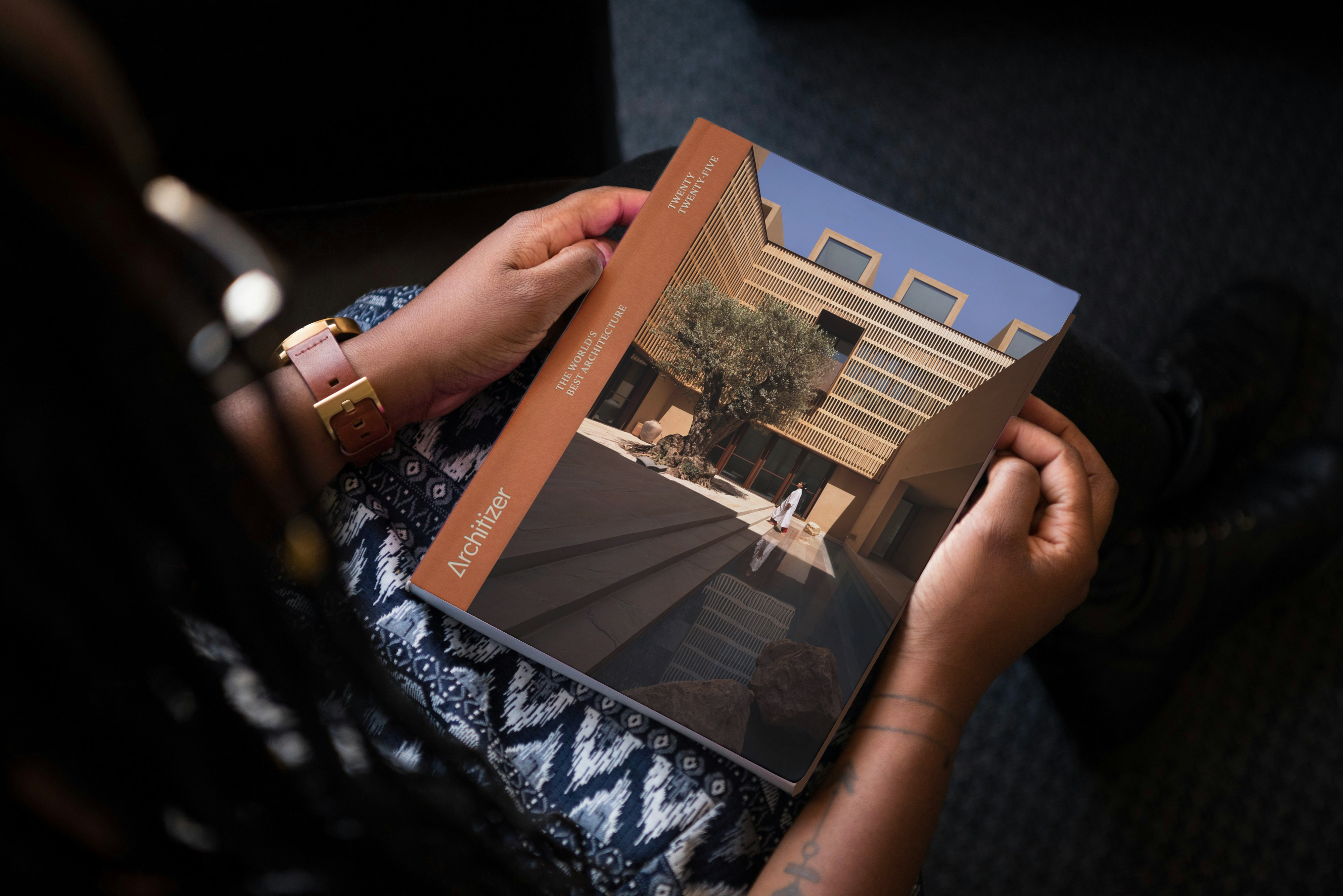Architects: Want to have your project featured? Showcase your work by uploading projects to Architizer and sign up for our inspirational newsletters.
For centuries, France has led in higher education, cultivating a legacy of academic prestige that shapes ideas, culture and professions worldwide. From the influential Sorbonne in the Middle Ages to the renowned grandes écoles of today, French institutions have been pioneers of specialized education, inspiring generations of creative minds.
That being said, academic distinction is not their only hallmark — design plays a vital role as well. From campuses housed in centuries-old landmarks to striking contemporary structures, France’s higher education institutions reveal how thoughtful design supports the pursuit of knowledge.
Through expressive materials, precise techniques and forward-thinking methods, these spaces echo the same dedication to excellence found in their curricula. So without further ado, let’s take a look at eight French institutions where architecture acts as a foundation for learning.
ESIEE-IT school of engineering and digital expertise’s
By Vallet de Martinis architectes, Pontoise, France

 This building reimagines the educational experience by combining carefully guided circulation with open, flexible spaces. Tiered levels create a variety of shared areas, including interior terraces, outdoor terraces and a stepped access to the amphitheaters, fostering collaboration and interaction between staff and students. The design emphasizes movement, encouraging users to explore and engage with the structure, promoting both work and well-being.
This building reimagines the educational experience by combining carefully guided circulation with open, flexible spaces. Tiered levels create a variety of shared areas, including interior terraces, outdoor terraces and a stepped access to the amphitheaters, fostering collaboration and interaction between staff and students. The design emphasizes movement, encouraging users to explore and engage with the structure, promoting both work and well-being.
The façade, characterized by rhythmic metal louvers, provides a striking visual identity while serving a functional purpose. These louvers, oriented at varying angles, reduce solar heat gain and allow for expansive full-height glass windows, ensuring natural light fills the interiors. The carved design creates an interplay of shadow and transparency, offering a unique dynamic experience from both inside and outside the structure.
Deloitte University EMEA
By Dubuisson, Bailly-Romainvilliers, France

Terracotta tile roofs and wooden facades create a strong connection to the local environment, both visually and materially. The interiors are tailored to encourage interaction and productivity, with open, flexible spaces that adapt to various training needs.
Sustainability is at the core of the design, with bioclimatic principles guiding the massing and energy-efficient materials used throughout. The campus demonstrates how thoughtful planning can enhance both the user experience and environmental performance.
Bâtiment H – Maison de l’Économie Pessac University Campus
By marjan hessamfar & joe verons architectes associes, Pessac, France

 Bâtiment H – Maison de l’Économie is a centerpiece of the University of Bordeaux’s campus renewal, combining academic and administrative functions within a sustainable and adaptable structure.
Bâtiment H – Maison de l’Économie is a centerpiece of the University of Bordeaux’s campus renewal, combining academic and administrative functions within a sustainable and adaptable structure.
The building features three distinct blocks for research and training, administrative offices and shared spaces, connected by circulation areas and patios that bring in natural light. A carefully proportioned massing strategy ensures harmony with its surroundings while maintaining a sense of accessibility.
The façade incorporates pale concrete, glass and anthracite-painted metal, with vertical and horizontal brise soleil that provide shading, reduce heat gain and improve energy performance. Inside, a grid-based design supports flexibility, while bioclimatic systems like active slab heating and high-density wood wool insulation create a comfortable and efficient environment.
ESSCA School of Management Bordeaux
By GUIRAUD-MANENC, Bordeaux, France
Jury Winner, 12th Annual A+Awards, Architecture +Glass

 Located in Bordeaux’s growing Bastide Niel district, the ESSCA School of Management transforms a 19th-century barracks into a contemporary teaching facility for future business leaders.
Located in Bordeaux’s growing Bastide Niel district, the ESSCA School of Management transforms a 19th-century barracks into a contemporary teaching facility for future business leaders.
The design preserves the original masonry walls while constructing a seven-story structure within them, creating a striking contrast between the historic base and the light, reflective new addition. Off-white stone panels and glass brise soleil bring modern functionality, allowing natural light to filter into the interior while providing shade and energy efficiency.
Outside, a rooftop terrace offers a place for students to interact and relax, while enjoying the panoramic views of Bordeaux.
University of Law-Paris I, Modernisation of the Lourcine Barracks, Paris (13ᵉ)
By Chartier Dalix, Paris, France

 This 19th-century military site retains its historic features while introducing new educational functions for the University of Law-Paris I.
This 19th-century military site retains its historic features while introducing new educational functions for the University of Law-Paris I.
The parade ground has been transformed into a landscaped forecourt, framing an underground gallery and lecture theatre. Above ground, classrooms and offices are integrated into the original masonry walls, with spacious interiors and historic materials carefully preserved to honor the site’s heritage.
Contemporary additions, including glass elements and refined finishes, create a functional and welcoming academic environment. This thoughtful redesign provides students and staff with a setting that respects history while meeting modern educational needs, fostering learning and connection in an exceptional architectural context.
Alstom Warehouses, Nantes Higher School of Fine Arts
By Franklin Azzi Architecture, Nantes, France

 Located in the transforming industrial district of Île de Nantes, the requalification of the Alstom Warehouses reflects a forward-thinking approach to urban renewal. The project restructures 26,000 square meters of existing warehouses into a multipurpose district, bringing together education, culture and enterprise.
Located in the transforming industrial district of Île de Nantes, the requalification of the Alstom Warehouses reflects a forward-thinking approach to urban renewal. The project restructures 26,000 square meters of existing warehouses into a multipurpose district, bringing together education, culture and enterprise.
At the heart of this redevelopment is the Nantes Saint-Nazaire Higher School of Fine Arts, designed by Franklin Azzi Architecture within Warehouses No. 4 and 5. The monumental structure accommodates 500 students with workshops, open spaces for experimentation, an art library and public spaces like a gallery and youth center. These new facilities are tailored to support contemporary art production across a range of mediums, including material, digital and print.
The revitalized district fosters collaboration among over 4,500 students from various fields—art, architecture, design and digital media—encouraging an exchange of ideas while integrating the old industrial site into the city’s evolving fabric.
International Fashion Campus, Paris
By Architecture Patrick Mauger, Paris, France
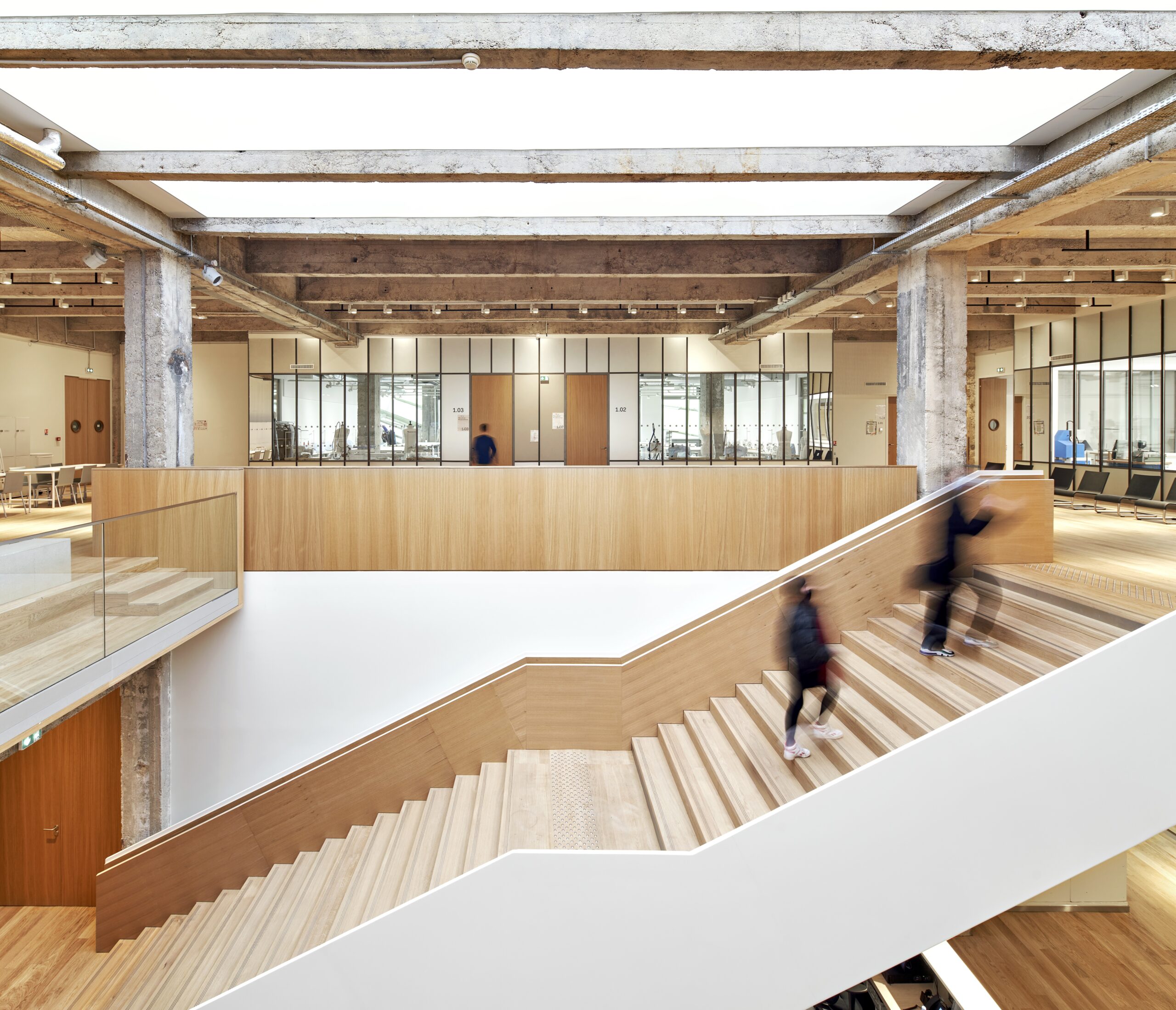
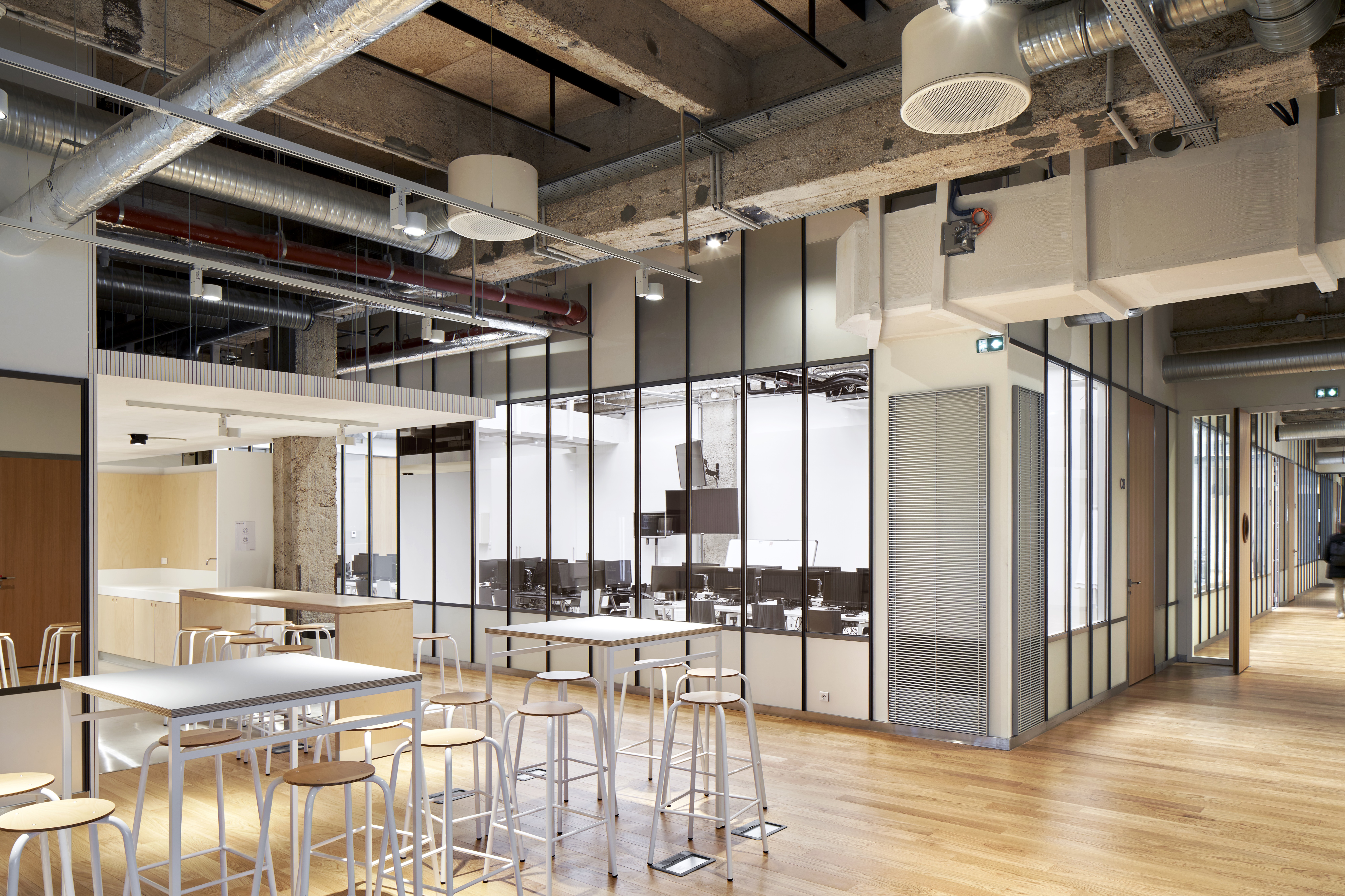 The former City of Fashion and Design has been transformed into an educational space dedicated to couture and fashion professions. Across its floors, collaborative and flexible environments are designed to support creative learning and experimentation. Wood plays a central role in the design, drawing inspiration from the warmth and craftsmanship of Parisian fashion houses and giving the building a distinct identity.
The former City of Fashion and Design has been transformed into an educational space dedicated to couture and fashion professions. Across its floors, collaborative and flexible environments are designed to support creative learning and experimentation. Wood plays a central role in the design, drawing inspiration from the warmth and craftsmanship of Parisian fashion houses and giving the building a distinct identity.
An interior street on the ground floor connects the school to the city, fostering an open relationship between the institution and its urban surroundings. The design emphasizes natural light and transparency, with raw concrete and glass partitions creating a modern aesthetic while maintaining a functional and welcoming environment.
From design studios to shared workspaces, the building provides students with practical, adaptable spaces that reflect the collaborative nature of the fashion industry, supporting their growth and creativity in an inspiring setting.
Université de Technologie de Compiègne (UTC)
By Ameller Dubois & Associés, Compiègne, France
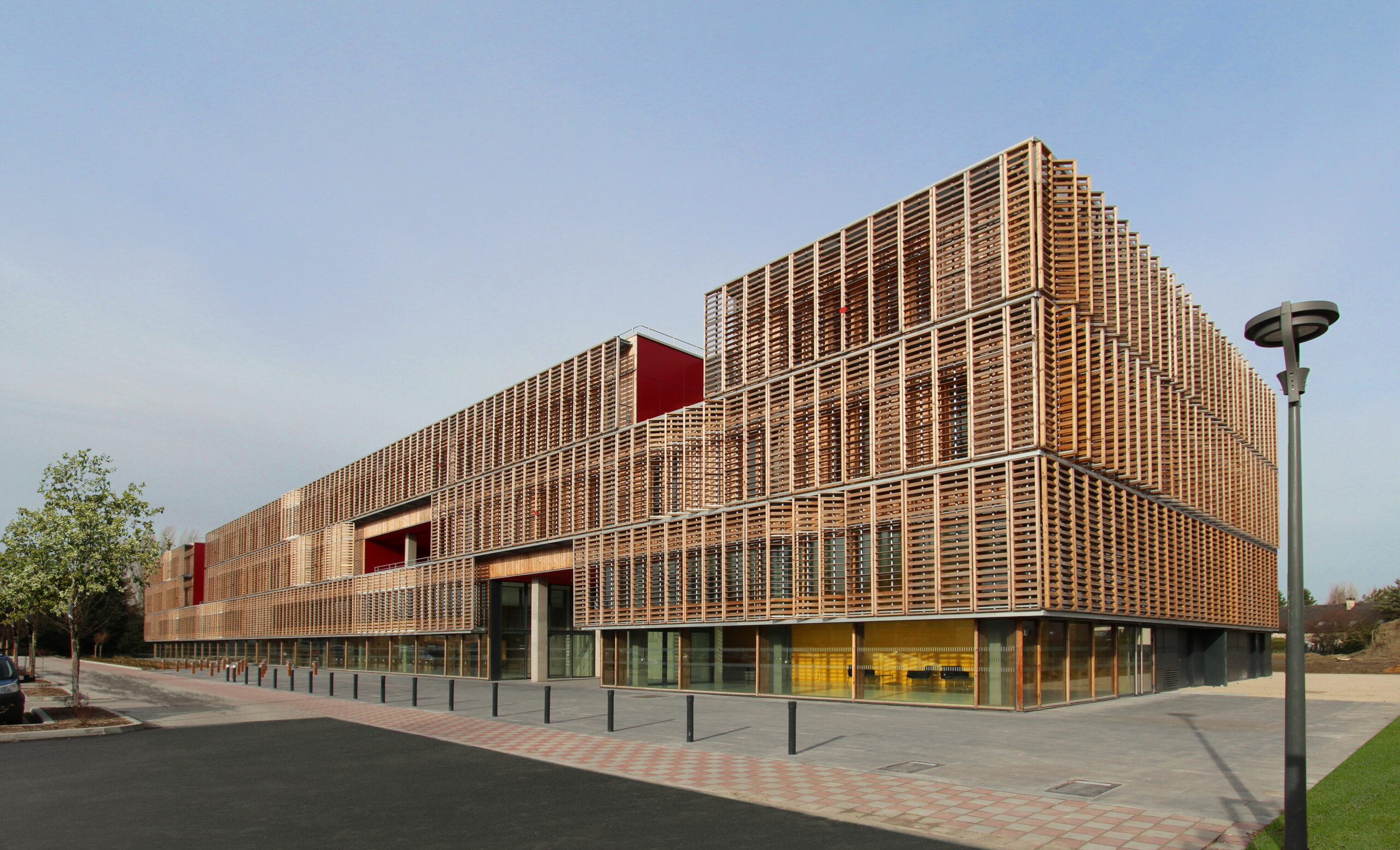
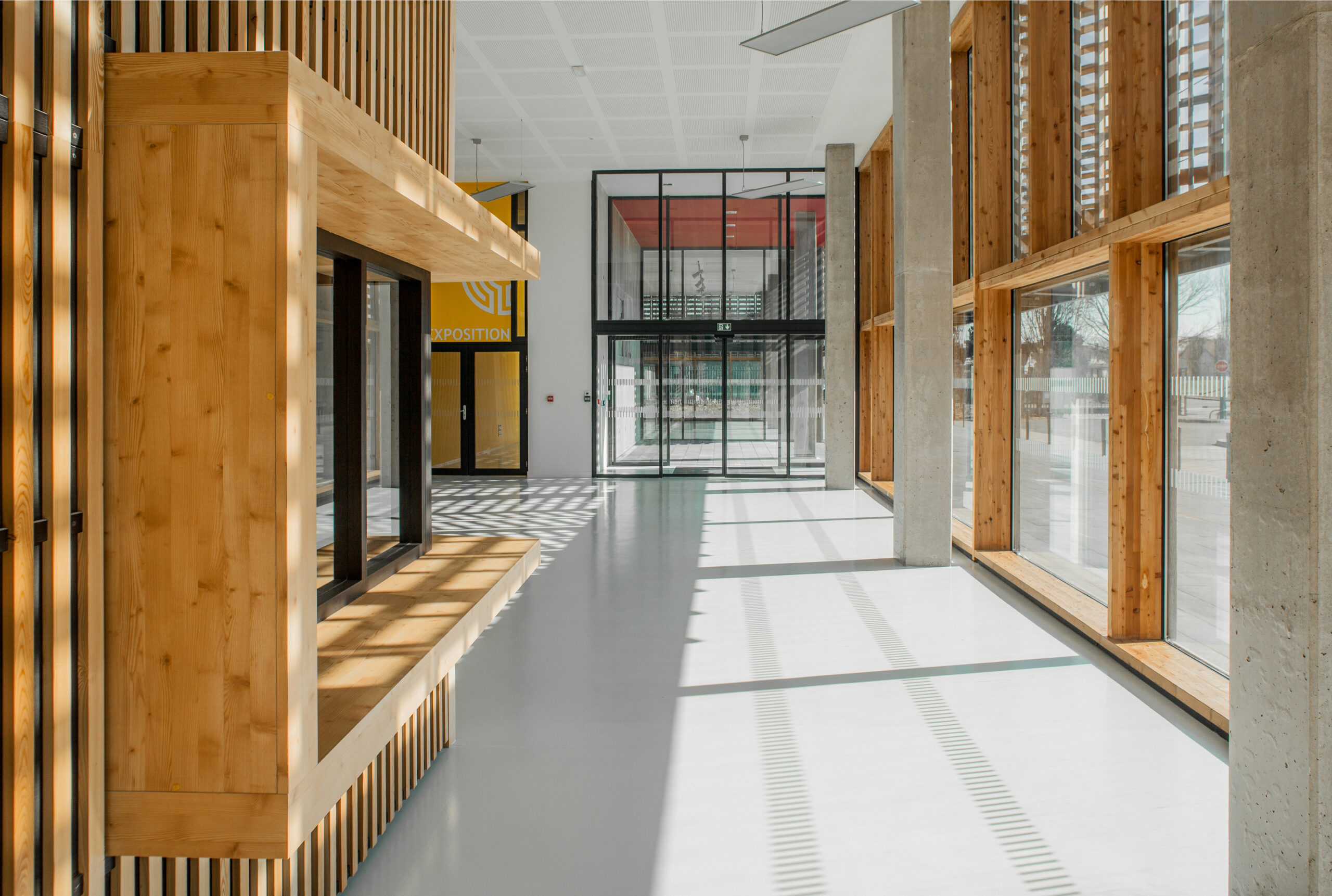 With a three-level open plan, wrapped in a bioclimatic façade of wooden panels, this building is designed to optimize light, shading and ventilation according to orientation and use. This thoughtful integration of shading devices allows full-height windows to illuminate laboratories and workspaces while maintaining energy efficiency.
With a three-level open plan, wrapped in a bioclimatic façade of wooden panels, this building is designed to optimize light, shading and ventilation according to orientation and use. This thoughtful integration of shading devices allows full-height windows to illuminate laboratories and workspaces while maintaining energy efficiency.
The building creates a cohesive identity through its design, offering outdoor terraces and double-height interiors that encourage relaxation and collaboration. A striking 14-ton suspended staircase connects the levels, combining dark iron and light beech tones to echo the building’s material palette.
Prioritizing environmental sensibility, the structure aligns with prevailing winds and sunlight while maintaining strong visual connections to the surrounding park. From its adaptable façade to its welcoming interiors, the UTC building embodies a careful balance between technical precision and a supportive academic environment, fostering innovation and interaction.
Architects: Want to have your project featured? Showcase your work by uploading projects to Architizer and sign up for our inspirational newsletters.
